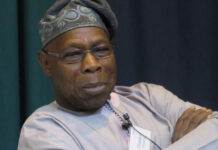In a significant development for Nigeria’s higher education sector, stakeholders have agreed to set the minimum benchmark score for university admissions at 140 out of a possible 400 in the Unified Tertiary Matriculation Examination (UTME). This decision, reached during a policy meeting in Abuja, marks a crucial step in shaping the landscape of tertiary education in Africa’s most populous nation.

The Joint Admissions and Matriculation Board (JAMB) Registrar, Prof. Ishaq Oloyede, emphasized that this benchmark is not a universal cut-off mark for all universities. Instead, it serves as a minimum threshold below which no university can admit students. This clarification is vital for understanding the nuanced approach to university admissions in Nigeria.
The policy meeting, attended by Vice-Chancellors and other key figures in the education sector, revealed a diversity of admission standards across institutions. While the majority agreed on the 140 benchmark, some prestigious universities, including Pan-Atlantic University, Covenant University, Obafemi Awolowo University, and the University of Lagos, recommended higher scores of 200 and above. This variation highlights the autonomy of universities in setting their admission criteria and reflects the different academic standards and competitiveness of various institutions.
This decision comes at a critical time for Nigeria’s education sector, which faces numerous challenges:
1. Access vs. Quality: The 140 benchmark aims to strike a balance between widening access to higher education and maintaining academic standards. It allows a broader pool of candidates to be considered for admission while still setting a baseline for academic preparedness.
2. Institutional Diversity: The range of benchmark scores across universities underscores the diverse nature of Nigeria’s higher education landscape, catering to different academic capabilities and aspirations.
3. Competitive Pressure: With limited spots available in top universities, the higher benchmarks set by some institutions reflect the intense competition for places in Nigeria’s most sought-after schools.
4. Educational Equity: The lower general benchmark of 140 could potentially increase educational opportunities for students from disadvantaged backgrounds who may not have access to the same resources as their peers in more affluent areas.
5. Quality Concerns: Critics may argue that a benchmark of 140 out of 400 (35%) is too low and could lead to a decline in the quality of university education. This concern highlights the ongoing debate about maintaining standards in the face of increasing demand for higher education.
6. Admission Process Complexity: The varying benchmarks across institutions add a layer of complexity to the admission process, requiring students to carefully consider their UTME performance against the specific requirements of their preferred universities.
The implications of this decision extend beyond immediate admissions. It could influence teaching and learning at the secondary school level, as students and educators adjust their expectations and preparations for the UTME. Additionally, universities may need to strengthen their first-year programs to support students entering with a wider range of academic preparations.
This benchmark setting also occurs against the backdrop of broader educational challenges in Nigeria, including underfunding, infrastructure deficits, and the need to align higher education with the country’s economic needs and job market demands.
As Nigeria continues to grapple with these issues, the flexibility in admission benchmarks represents an attempt to navigate the complex terrain of expanding educational access while striving to maintain quality. The coming years will be crucial in assessing the impact of this policy on the quality of graduates, the reputation of Nigerian universities, and the overall development of the country’s human capital.
Moving forward, continuous monitoring and evaluation of this admission policy will be essential to ensure it meets its intended objectives without compromising the quality of higher education in Nigeria.



